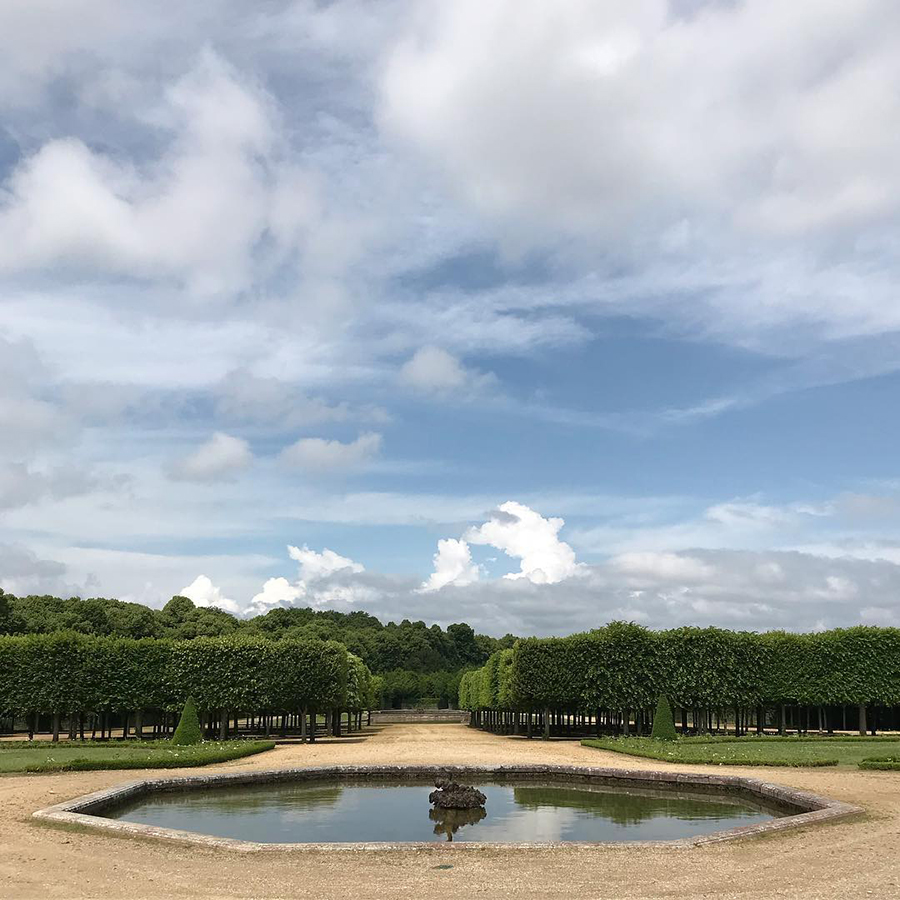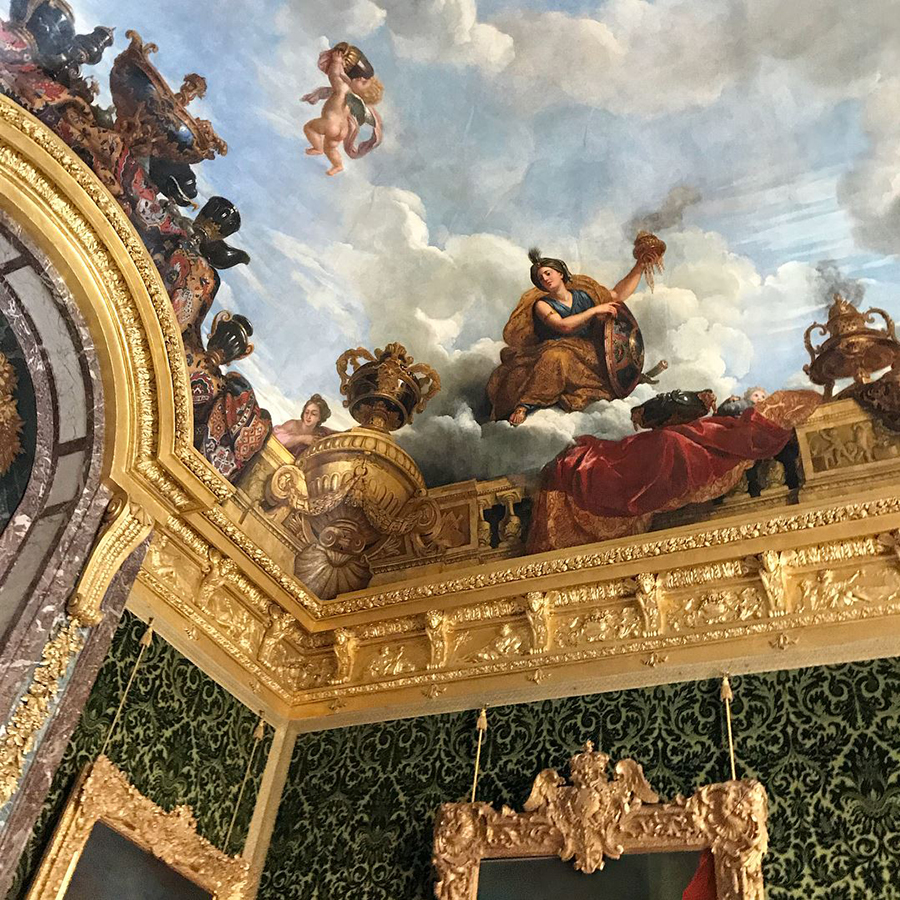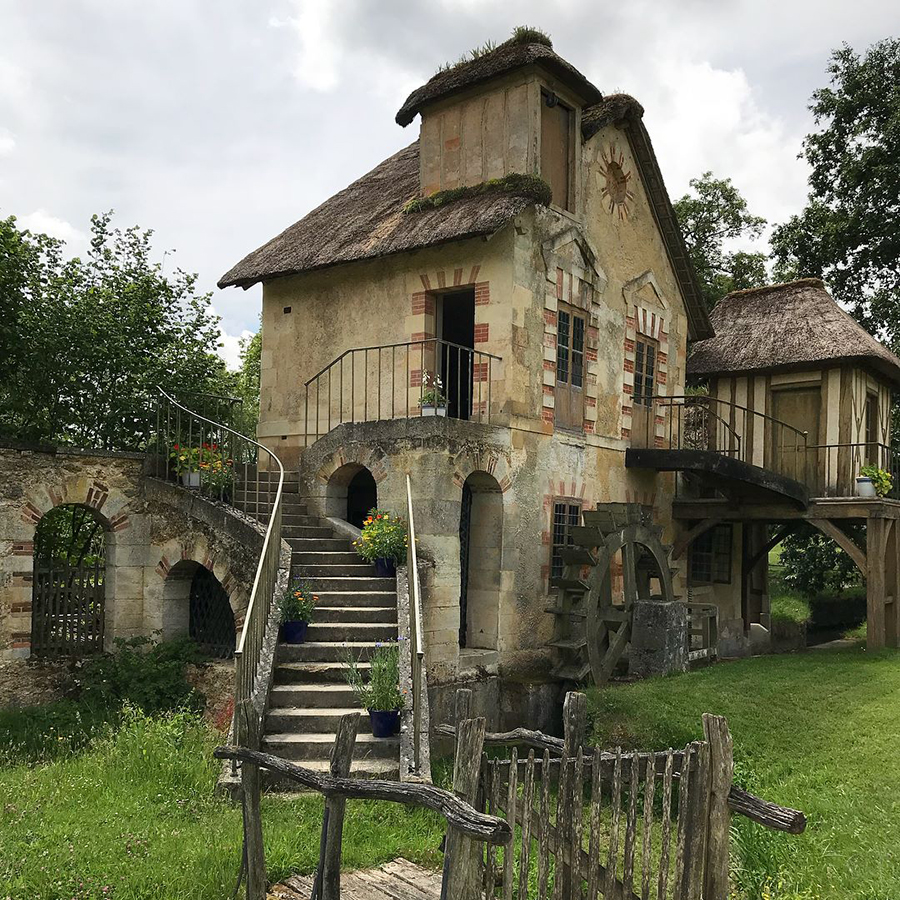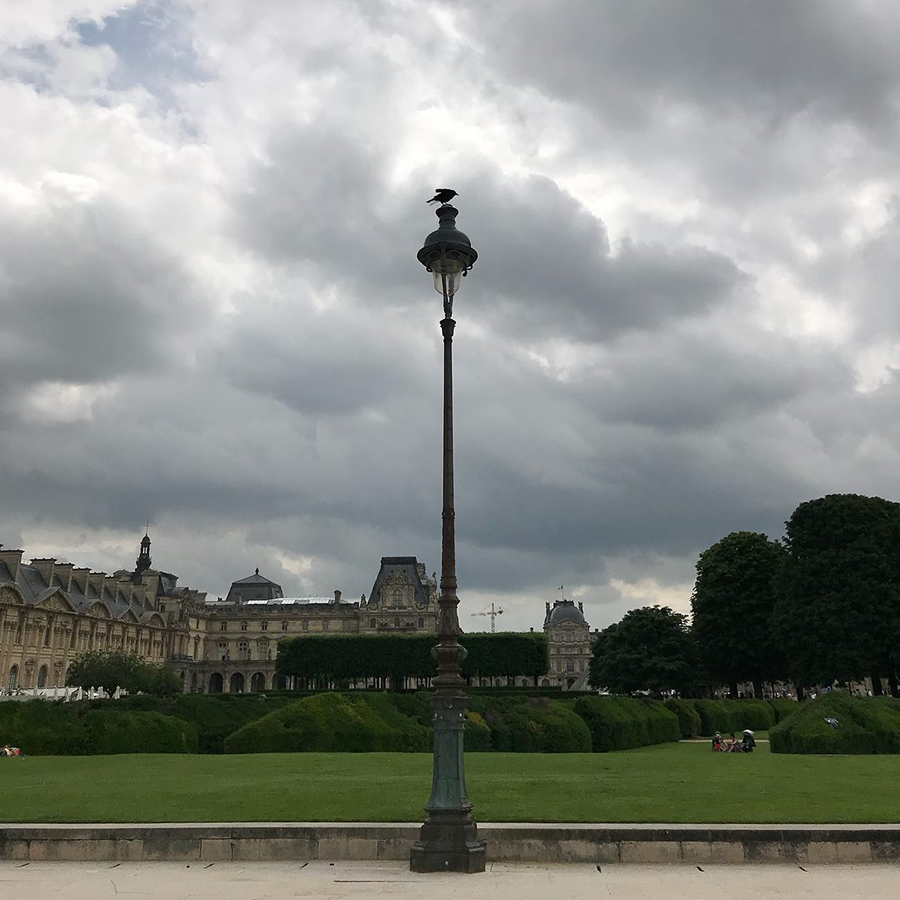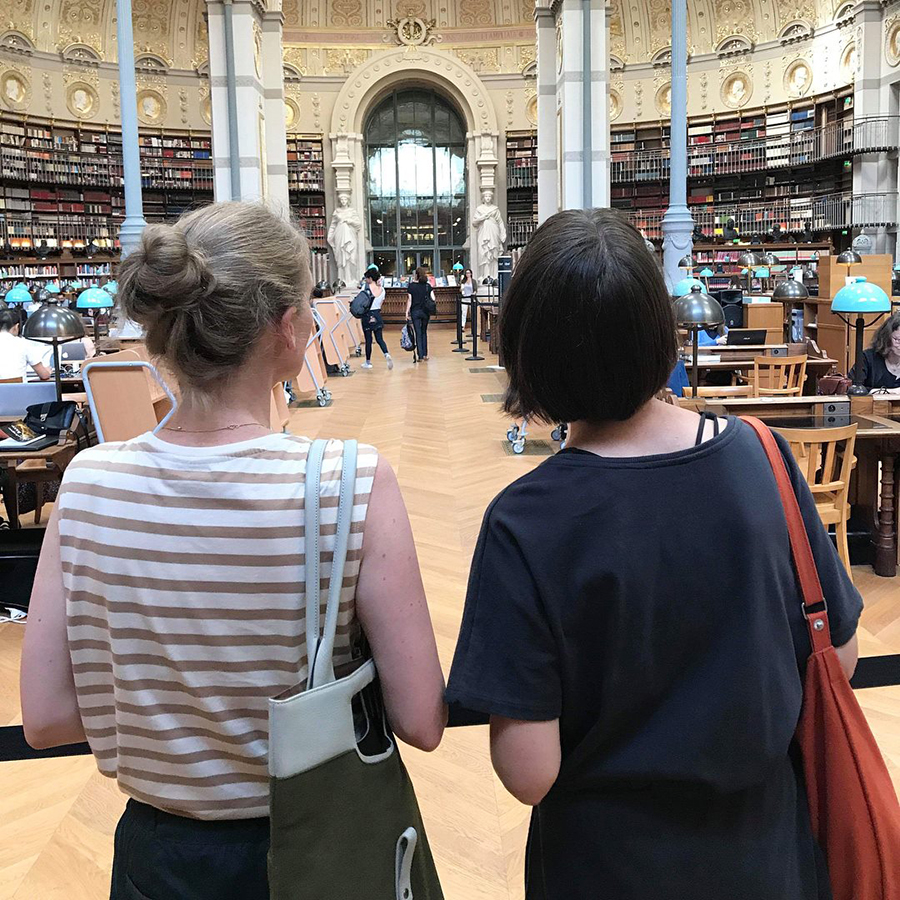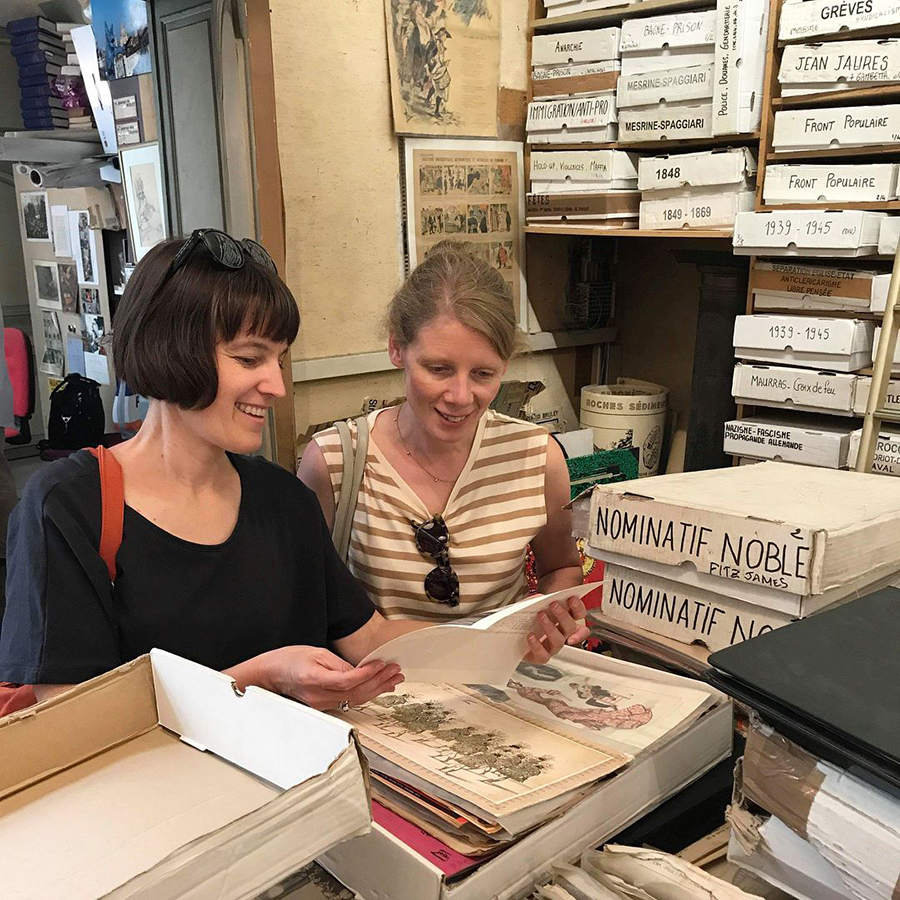Ver-sighed
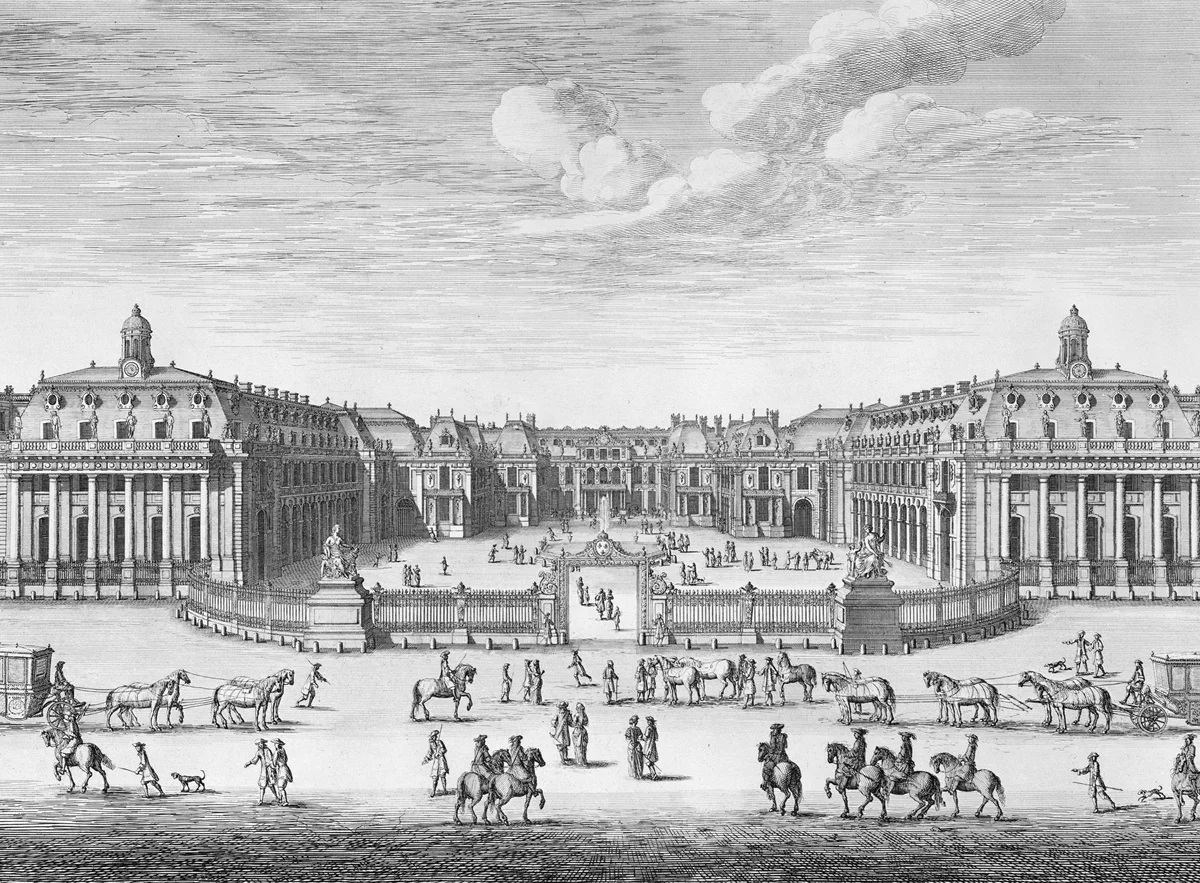
French Connections
Australian Print Workshop
Paris study tour
May – June 2018
French Connections, part 7
French Connections, part 1
French Connections, part 2
French Connections, part 3
French Connections, part 4
French Connections, part 5
French Connections, part 6
(Post) French Connections, part 1
(Post) French Connections, part 2
(Post) French Connections, part 3
(Post) French Connections, part 4
1st June:
Ver-sighed. (With rose-capped shoulders.)
* * *
Gold. Rose. Grand. Petit. Gold. Chandelier. Double it. Triple it. At the Palace of Versailles, passing through the Gallery of Battles with its thirty monumental paintings, and the Hall of Mirrors, running out of words for ‘epic’ and ‘vast’ as we reconfigure our understanding of spaces familiar through print and paint, rounding out the two-dimensional.
* * *
Rather than communing with Marie Antoinette’s ghost, my interest was in the goats, hens, sheep, and smooth-as-velvet cows romping and resplendent as any flower motif and harp in her operational toy farm. Found a small distance from the Temple of Love rotunda, Antoinette’s hamlet of crooked rooftops upon which doves roosted and bulbs sprung, proved a pastoral comedy-cum-delight to colour me cornflower blue, lilac and green. A curious visual highlight, having worked our way from the palace to the Grand Trianon to the Petit Trianon, becoming smaller like Alice in Wonderland, a farm of a charm and a charm of a farm, not to be missed, never mind our increasingly rosy shoulders and noses. From the mill to the horseshoe fountain, and a family of geese, we’d happily spend the night there, and no-one would need to polish the chook eggs and reposition them in the hay for us to find just so. Inspired by the theories of the ‘state of nature’ expounded by Jean-Jacques Rousseau, La Hameau de la Reine was built between 1783 and 1786, under the supervision of Richard Mique, and drew influence from the traditional rustic architecture of Normandy, replete with a decorative windmill, dovecote, and dairy, all in all, a perfect foil to opulence.
1st June (continued):
Yesterday, as the edges of time and place melded into a giant collage, where moments from one component seep into the next and make a distinct whole, I pictured the dancers from James Thierrée’s Frôlons descending the staircases, sliding down each step on their backs like sequinned snakes or crouched and crawling on their knees. It reminded me that while things are moving quickly, and tomorrow morning we leave Paris, experience burrows through to your core and stays with you. My tree rings will forever be informed by what I’ve seen, felt, and questioned.
* * *
Last day, Lissitzky. (El Lissitzky, Beat the Whites with the Red Wedge, 1919–1920/1966, Chagall, Lissitzky, Malévitch: The Russian Avant-Garde in Vitebsk (1918–1922), Centre Pompidou, on our last full day in Paris before we head north.)
2nd June:
Like an El Lissitzky innovation, we made Paris our ‘proun’, a “construction to be looked at from all sides: from above, from below, and from around. In his essay on the ‘Proun’ Lissitzky wrote: ‘Circling round it, we screw ourselves into space.’” And so today we set in motion our own extension, beginning with Chagall, Malévitch, and co., where we were especially drawn to their works on paper; we called in on Marie Curie’s office and laboratory, and admired the Tho-Radia cosmetics from 1933; like a pinball, from form to ping, we skittered into the Sainte-Genevieve Library near the Pantheon; we paused within the hollow of the Mémorial des Martyrs de la Déportation — “They descended into the mouth of the earth and they did not return” — and later came across a circle of singers rehearsing in a church on Rue Saint-Martin, each one of them dressed, perhaps by chance, in different colours: red, green, dark blue, ochre, and bone; we took shelter from the rain in Brancusi's Atelier; partook in a flaming Crêpes Suzette; and as we packed our cases for the next leg, the tip of the Eiffel Tower, visible through the kitchen window, twinkled 10pm. “From above, from below, and from around”, a fitting French Connections finale. Pop!
* * *
This may be our last morning in Paris, but not our last morning in France. We are heading to Lille, to the capital of the Hauts-de-France region near the border with Belgium. We’ll still be standing before landmarks, gaping at libraries, and rummaging for possible treasure in espresso and croissant fuelled awe. Before we whisper adieu and as captured by @annelvirgo, we rewind to the Richelieu library (and ‘box shop’, @elspethemily). “Forward, forward, without a halt”, like yesterday’s squared-up Chagall En avant, en avant, 1918.
(Versailles elated-related artists’ books: Tumbling lightly, tumbling fast (I) and Tumbling lightly, tumbling fast (II), 2014, and I am not trying to trick you; not purposefully, 2009)
At Versailles, the young Louis XIV could also indulge in his personal dream world. It was a world haunted by the memory of the elaborate and exotic furnishings assembled at the Louvre by his mother and of the Italian operas organized by Mazarin, and a world inhabited less by the virtuous presence of Marie-Thérèse, the Spanish Infanta he had married in 1660, than by the charms of Mlle de La Vallière, the first of his mistresses. Here, in the still small but gay and colorful pavilion devised by Le Vau, now his favorite architect, the young sovereign surrounded himself with sensuous Italian or Flemish cabinets of ebony and pietre dure, Chinese porcelains and Chinese vases inlaid with gold and silver filigree, Turkish carpets, and tubs full of fragrant jasmine and orange trees. In the gardens that stretched from the château out toward the thickly wooded countryside, Louis could entertain his mistress and his court with countless banquets, theatrical and musical performances, ballets, and fireworks. Some of the most lavish fêtes lasted several days, like the Plaisirs de l’Isle Enchantée (1664) and the Fêtes de l’Amour et de Bacchus (1668), always created by Louis’s favorite artists and depicted in numerous prints.
— (Department of European Sculpture and Decorative Arts, The Metropolitan Museum of Art, based on) Olga Raggio, French Decorative Arts during the Reign of Louis XIV (1654–1715), 2009
Image credit: Israel Silvestre, Château de Versailles seen from the forecourt, from Chalcographie du Louvre, Vol. 22, 1682, etching depicting the facade of the palace with its marble court and forecourt, the year Louis XIV officially moved his court from Paris to Versailles

